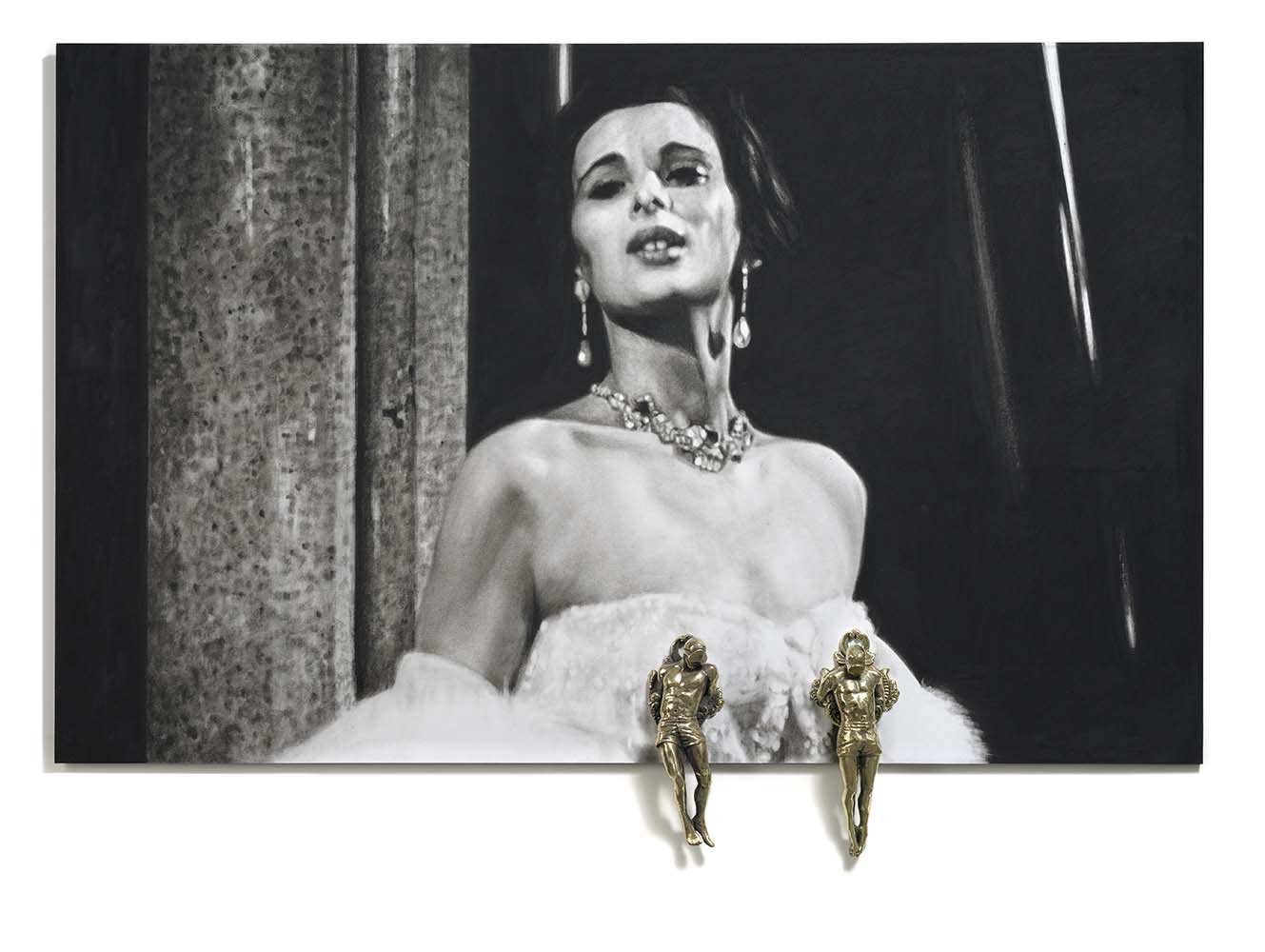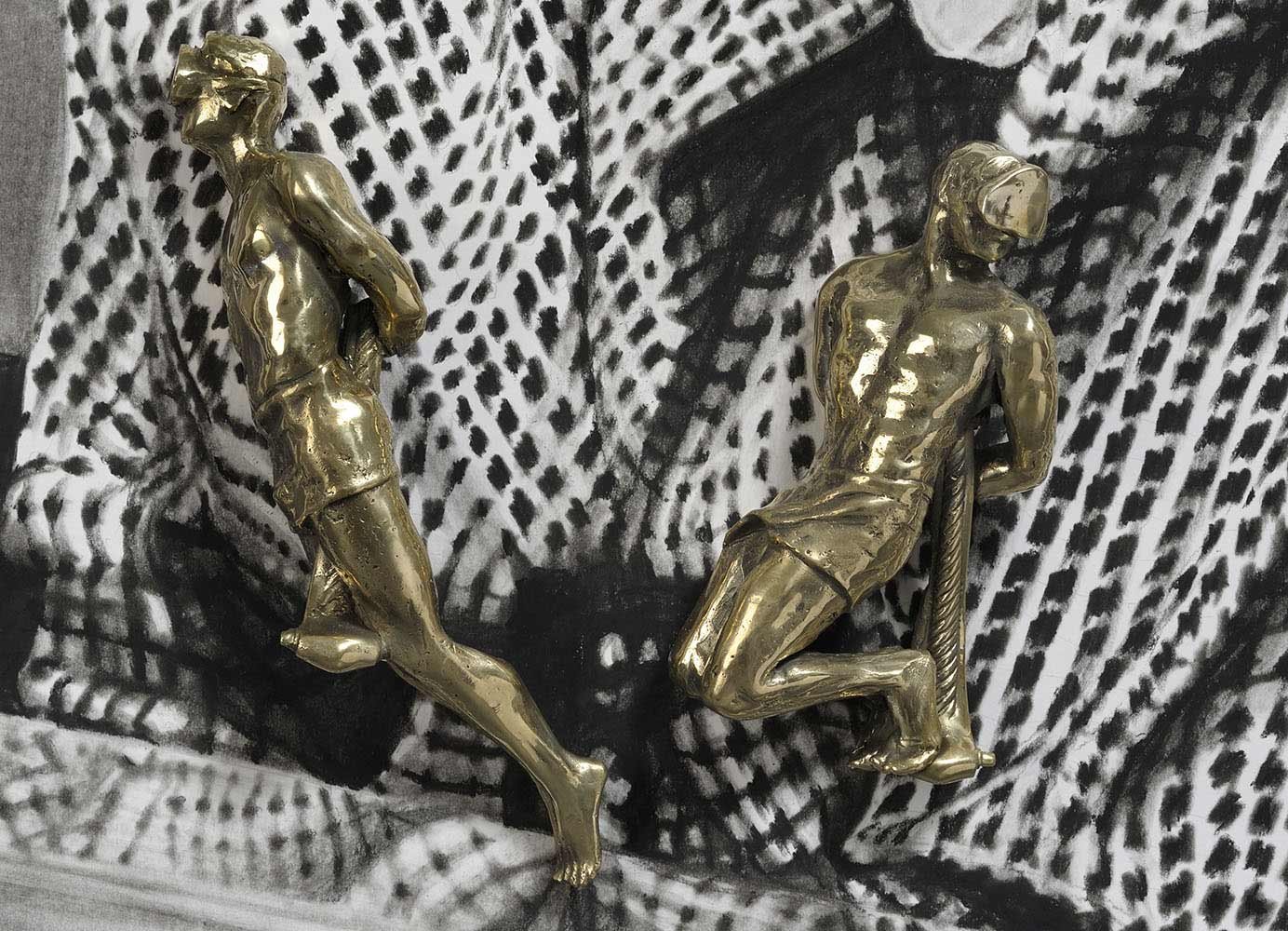Knockers
Jessica Purefoy
Independent Film Producer and Director
Featured in Measuring Elvis 2015
In this body of work, Fowler explores the fine line between dominance and subservience, strength and fragility — the tension between outer appearance and inner struggle that her previous work has also touched upon. In fact, this body of work feels like the climax towards which her years of interest in these themes have been leading.
At first glance, this series of epic drawings appears to simply represent a collection of strong women, the vast scale of their representation serving to heighten their sense of dominance. These are women whose ability to steal a scene made them who they are, and on first encounter that is the sum of what these works present —a series of portrayals of incredible women, bursting forth from the paper, demanding our attention.
Perhaps it’s the desperation of this clamour that first suggests that something else is going on beneath the surface, explaining the subject’s desire for attention and thwarting their claims at strength. Upon closer inspection, the viewer sees that each woman is adorned with a pair of brass door-knockers, hanging pendulously from her breasts. The knockers are depictions of men, hands bound behind their backs, faces hidden behind masks, twisting and struggling against the graphite backdrop of their host’s chests.
Fowler was inspired by pictures of US Navy Seals in training — plunged under water with their hands tied; compromised and weakened, they fight against the water towards the surface and survival. Cast in brass, these figures are a nod towards the melodrama of ornamental Victoriana and recall the twisted, tortured figures of Michelangelo’s Dying and Rebellious Slaves. Each knocker is unique and no picture shares the same pair. There is no mould, and each one is an individual sculpture.
It might appear that these depictions of struggling men, juxtaposed with the colossal drawings of glamorous and powerful women, serve merely to heighten Fowler’s celebration of strong female icons. In fact, the effect is rather more nuanced. For this is not quite the simple portrayal of dominant women and subversive men that it appears to be: the knockers adorn these women like ornate nipple tassels, weighing them down and drawing our eye to their breasts. Looked at like this, a filter of humiliation taints our view of them. The knockers throw the drawings and their subjects into a new light, bringing a sadness to the women who bear them: we are reminded that they are all perceived as sexual objects.
The title of the series, Knockers, is not just a play on words, a witty pun. The artist’s intention runs deeper than that. The title serves to alert us to a complex play between ownership and objectification. What appeared at first to be images of female strength and power suddenly feel cheapened. The brave front put on by these women becomes a fragile veneer, barely concealing their vulnerability. The men, who initially appeared submissive, act not only as signallers of the women’s compromise, but can be seen in themselves as surprising symbols of strength, each one fighting his way to the imagined surface, winning his battle of endurance and will.
When we learn the stories behind the moments that Fowler has chosen to depict in these women’s lives, the darker reality of the pieces becomes even more apparent. Marilyn Monroe caught, cornered by paparazzi, alone and without make-up. A broken Jean Harlow leaving the funeral of her husband who committed suicide. Marlene Dietrich showing her support for the Allies during WWII, while being branded a traitor by her countrymen, surrounded by people and yet alone behind the public mask she presents. Joan Crawford in the divorce courts, the renowned bitch of Hollywood made vulnerable by her philandering husband. And Italian actress Lucia Bose in the final scene from The Story of a Love Affair, shown heaving with pain as her lover abandons her.
Fowler has been working towards combining the mediums of drawing and sculpture for years. These works are the culmination of this media fusion, a combination of exact and life-like, two-dimensional graphite drawings with antique brass sculpture, allowing for a looser and more playful interpretation of Fowler’s photographically precise drawings.

